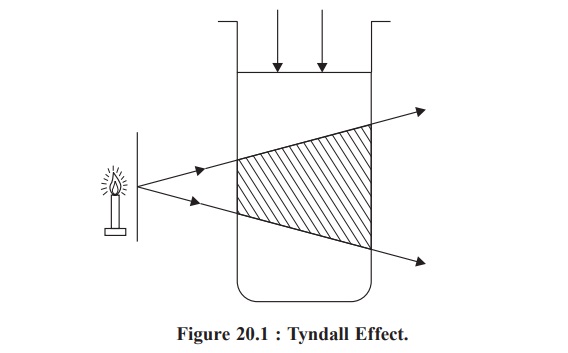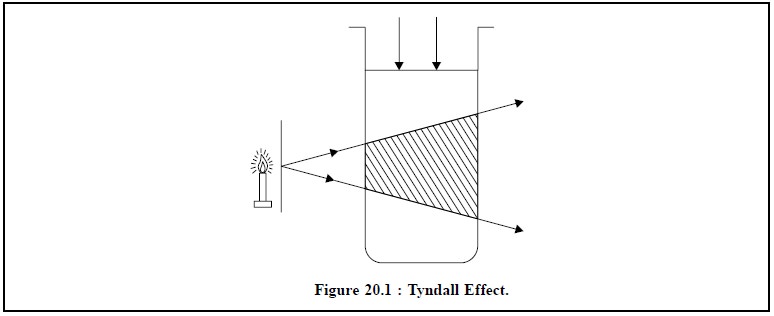Chapter: Pharmaceutical Drug Analysis: Polarimetry
Nephelometry and Turbidimetry

NEPHELOMETRY AND TURBIDIMETRY
INTRODUCTION
When light is passed through moderately stable
suspensions, a portion of the incident radiant energy is dissipated by virtue
of the absorption, refraction, and reflection, whereas the remaining portion
gets transmitted. It is quite evident that the optical characteristics of each
suspension shall alter according to the concentration of the dispersed phase.
In fact, the measurement of the intensity of the transmitted light through such
suspensions vis-a-vis the
concentration of the dispersed phase serves as the basis of turbidimetric analysis.
In another situation when the aforesaid suspension is
viewed at 90° (i.e., right angles) to
the direction of the incident light (Figure 20.1) the system appears opalescent
on account of the reflection of light from the particle of the suspension. This
scattering of light is termed as the Tyndall
effect. The observed opalescence or cloudiness is the net result caused by
irregularly and diffusely reflected light from the suspension. Consequently,
the ultimate measurement of the intensity of the scattered light as a true
representation of the actual concentration of the dispersed phase forms the
basis of nephelometric analysis (derived from Greek : nephele-means cloud). It is found to be most sensitive and
effective specially in the case of very dilute suspensions having a
concentration not greater than 100 mg L–1. However, it is
interesting to observe that the technique of turbidimetric analysis resembles
that of flame photometry ; and nephelometric analysis to that of fluorimetry.

Related Topics